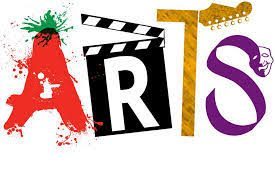The arts in schools is an important experience for children, in all aspects as it allows them to be creative, within their thoughts and expressions. These can be produced and created through the use of paper, identifying colours, use of their words, or sometimes just the movement or expression is all that’s needs. Reflecting on my experience today I see how these can be produced and how they can link together.
“The arts are not the flowers, but the roots of education” (Crowther, 1980)
I identified with the child’s perspectives within the aspects of drama and visual arts, especially through drama where insecurities become apparent in an individual’s minds with possibly feeling nervous during a drama lesson or feeling their artwork is dismissed. It is important to further a child’s creativeness through allowing them to be inquisitive to their ideas and pieces of work, asking them questions about what is that you have created or why did you choose these colours. Some children will be able to stand out, but some may need that little bit of time and have that reassurance there that this is ok too.
Visual arts interactions play a key part in a child’s interactions through a creative process in the classroom, learners can gain from their expression and identification of skills. “Visual art education develops an understanding of the creative practice through knowledge, understanding, and production of art in contexts.” (INSEA, 2018)
Reflecting on visual arts today I was able to select this painting of flowers, done by a child within the early stages. Noticing this painting through the colours of the flowers stem and buds to it standing out on the black paper. The precision the child has taken in the colour choice and strokes, amazed me for the early years. McAuliffe (2007) explained how ‘children’s artwork tends to progressively demonstrate closer attention to detail,’ however there is still the common factors for this age and stage, shown through the bigger brush and creating big strokes, or using the larger piece of paper, so the child doesn’t need to be concise and can express themselves fully on a bigger scale.
Education Scotland (2017) states visual arts to look at learners gaining rich opportunities to be creative and to experience inspiration and enjoyment. This was evident at the ways this can be done from seeing a range of work from primary school learners.
Children create these images on paper but with the use of drama, they can make these images become actions or the opposite of being able to make their movements into a still picture. From my experience, today of being involved in various drama conventions such as hot seating, thought tunnel, freeze frame and improvisation. All these enable the children to link their visual thoughts into actions, with the main convention to bring them out being teacher in role. The curriculum experiences and outcomes state how ‘exploring real and imaginary situations help learners to understand and share their world.’ (Education Scotland, n.d.) Both visual arts and drama enable children to do this and connect the two together.
Looking at both these aspects within arts in my practice I want to let the child reach their full capacity of creativeness and not restricting their minds. I would want to display their artwork so they can look back on it but also make connections as they partake in their drama lesson. As a child can hopefully link their learning through drama to creating an image in visual arts, being able to express further than their movements to add colour or an idea of how their idea looks. I want to be open to letting the child use the arts to escape and express to you their ideas


References
- Education Scotland (n.d.) Curriculum for excellence: expressive arts Experiences and Outcomes [online] Available at: https://education.gov.scot/Documents/expressive-arts-eo.pdf[Accessed: 10/09/2019]
- McAuliffe, D. (2007) Foundation and primary settings. In Teaching Art and Design 3-11 (edited by Cox, S., Watts, R., Grahame, J., Herne, S. and McAuliffe, D.)London:Continuum.
- Crowther (1959) in Crowe S. (2006) Lifelong Learning and the Arts: “The Arts are not the Flowers, But the Roots of Education“. In: Chapman J., Cartwright P., Mcgilp E.J. (eds) Lifelong Learning, Participation and Equity. Lifelong Learning Book Series, vol 5. Springer, Dordrecht
- InSEA (2018) The InSEA Manifesto 2018 [online] available: http://insea.org/InSEA-Manifesto [accessed: 10/09/2019]

